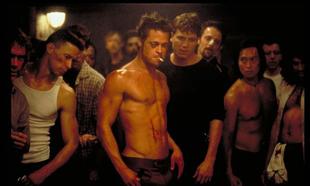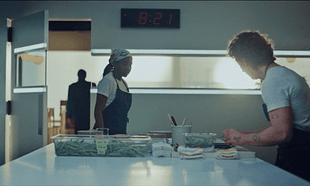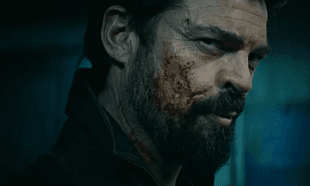The original Woodstock in 1969 became a major cultural landmark in large part thanks to a documentary, but the events of Woodstock '99 are more akin to a horror film.
The 1969 iteration of the festival saw a celebration of free love, peace, love and Hendrix, while the 1999 version was an exercise in hedonism, anarchy, chaos, and Korn.
If a major cultural event was ever due to get a big-budget Netflix documentary series, it was Woodstock '99, and this miniseries doesn't hold back.
The music festival that descended into hell on earth has always been of interest to music fans, and this miniseries largely doesn't disappoint.
'Trainwreck: Woodstock 99' deploys a simple editorial trick by telling the story in linear order, which neatly ratchets up the tension as we go along.
The documentary is edited like a horror film, where you always know there is an invisible, unknown threat out there that is ready to strike at any moment, and using this storytelling device in the context of Woodstock '99 is clever.
What is less clever is the testimony of some of the talking heads.
One journalist claims that the violence we saw at Woodstock '99 was a result of 'Fight Club' being released at the same time, yet a cursory search tells us 'Fight Club' wasn't released until October 1999, a few months after the festival.
'Fight Club' was also a famous underperformer in cinemas that didn't find an audience until it was released on home video, and it is baffling that the documentary makers would leave this factually inaccurate statement in the documentary.

In fact, the documentary does a fair bit of editorialising and is keen to paint certain people as the heroes and villains of the piece and doesn't let the viewer draw their own conclusions.
In documentary making, viewers are supposed to come to their own conclusions, but this documentary is keen to make Limp Bizkit the baddies of the story.
In 'The Thin Blue Line', the one documentary everyone watches in film school, Errol Morris lets viewers come to their own conclusion about who was in the right or wrong.
In the case of documentaries about controversial subjects like Robert McNamara in 'The Fog Of War', when you are presented with a difficult subject matter that doesn't want to play ball, you warp the story you want to tell around them.
From a journalistic standpoint, this somewhat robs the film of credibility or objectivity.
In the instance of this Woodstock '99 documentary, Limp Bizkit's contemporaries Korn were just as, if not more responsible for setting the tone of the festival, and Korn frontman Jonathan Davis is given the chance to tell his side of the story, while Limp Bizkit are only given the chance to defend themselves via their old manager.
This piece of editorial framing is subtle, but tells you that the documentary makers had an agenda before heading into the editing bay.
Fatboy Slim's appearance in the documentary is presented as the tipping point of the festival from rowdy to depraved, and he is given ample air time to explain his version of events.
It is clear that the documentary makers had a list of people who were for or against appearing in the documentary and wrote the documentary around availability, as there are some holes in the framing of the story.
Minor lip service is paid to the conditions on the festival site such as the lack of amenities, accommodation, and price gouging, and this is a major part of why the festival descended into mayhem.

Indeed, we also hear more from the festival organisers than the concert goers on the ground which is also a missed opportunity.
We hear from people who were there, and we get some footage from people on the ground, but the documentary doesn't really go into just how disgusting and brutal the conditions were.
How did people avoid the stifling heat? How did people sleep? What did people do between sets?
The documentaries answer seems to be "they partied on" which doesn't paint the full picture.
These fairly substantial flaws aside, the documentary is well worth your time, if only to get an example of how much music culture has changed.
Metal bands like Rage Against The Machine, Limp Bizkit, Korn, Metallica and Megadeth headlining the festival that was once the home of Hendrix, Arlo Guthrie, Janis Joplin and Crosby, Stills, Nash & Young is a snapshot of where culture was in 1999, and the documentary has all the depth and substance of a Wikipedia article.
We aren't given that much of an idea why these bands were the hot acts of the day, and the context here is key to understanding Woodstock '99.
The creeping sense of escalation and footage from people on the ground makes this documentary worth watching however, and it is impossible to be bored while watching.
Even if you are well-versed in the events of that one infamous weekend of music history, you are still left with your jaw on the floor.
The main festival organisers come across as a team of useful idiots that make the mayor in 'Jaws' look like Gandhi, and the documentary does a great job of cross-cutting between their differing points of view.
You will come away from this documentary wanting a shower and thankful that the only major scandal associated with concerts in Ireland is the terrible public transport.










































































